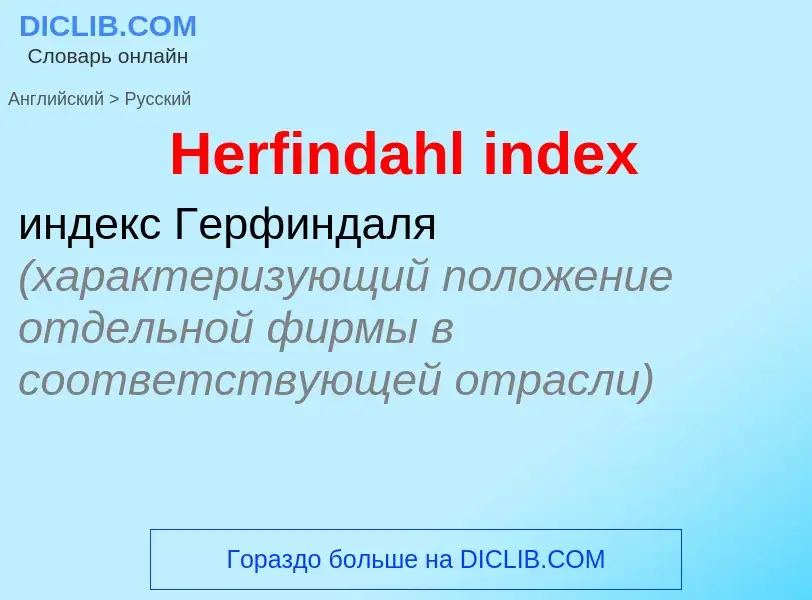Перевод и анализ слов искусственным интеллектом ChatGPT
На этой странице Вы можете получить подробный анализ слова или словосочетания, произведенный с помощью лучшей на сегодняшний день технологии искусственного интеллекта:
- как употребляется слово
- частота употребления
- используется оно чаще в устной или письменной речи
- варианты перевода слова
- примеры употребления (несколько фраз с переводом)
- этимология
Herfindahl index - перевод на русский
['indeksiŋ]
общая лексика
индексация, индексирование
создание индексов
деление
индексация
индексирование
индексирующий
индицирование
нумерация
нумерование
существительное
техника
индексирование
деление окружности на части
периодическая круговая подача
программирование
индексирование (документов)
составление указателей
специальный термин
индицирование
приписывание индексов
Определение
Википедия
The Herfindahl index (also known as Herfindahl–Hirschman Index, HHI, or sometimes HHI-score) is a measure of the size of firms in relation to the industry they are in and is an indicator of the amount of competition among them. Named after economists Orris C. Herfindahl and Albert O. Hirschman, it is an economic concept widely applied in competition law, antitrust regulation, and technology management. HHI has continued to be used by antitrust authorities, primarily to evaluate and understand how mergers will affect their associated markets. HHI is calculated by squaring the market share of each competing firm in the industry—expressed as either fractions, decimals, or whole numbers—and then summing the resulting numbers (sometimes limited to the 50 largest firms). The result is proportional to the average market share, weighted by market share. As such, it can range from 0 to 1.0, moving from a huge number of very small firms to a single monopolistic producer. Increases in the HHI generally indicate a decrease in competition and an increase of market power, whereas decreases indicate the opposite. Alternatively, if whole percentages are used, the index ranges from 0 to 10,000 "points". For example, an index of .25 is the same as 2,500 points.
The major benefit of the Herfindahl index in relation to measures such as the concentration ratio is that the HHI gives more weight to larger firms. Other advantages of the HHI include its simple calculation method and the small amount of often easily obtainable data required for the calculation.
The HHI has the same formula as the Simpson diversity index, which is a diversity index used in ecology; the inverse participation ratio (IPR) in physics; and the inverse of the effective number of parties index in political science.


